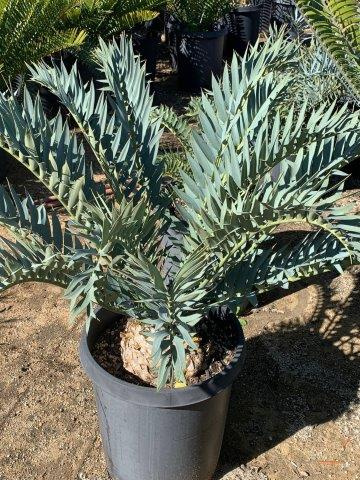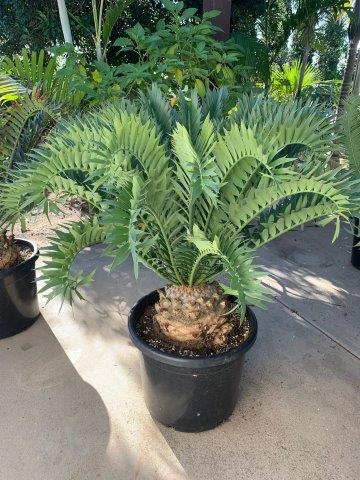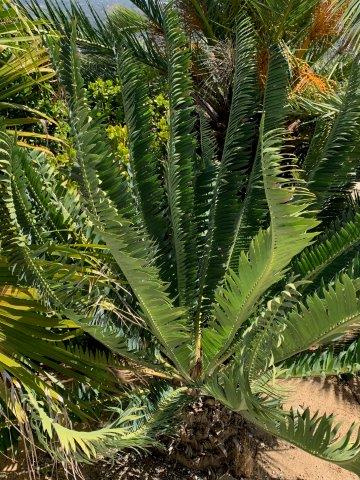Encephalartos arenarius, blue. An interesting ‘Learning Curve’ story.
I assisted in pollinating a large Encephalartos arenarius around 2002 located on the west side of Escondido, owned by an 20 year employee of the SD Zoo who was very familiar with cycads (I was a newbie then). The pollen acquired was ‘straight arenarius’, not ‘arenarius true blue’, from A&A Cycads. The pollination method was cutting a small lid at the top of the cone (like one does a pumpkin on Halloween), pouring 200 ml of distilled water with pollen into that tubular cavity and taping that lid back in place. The cone desiccated in 6 months, the seed covering softened in 3 months, then removal of this covering, cleaning, and planting in a bed of sand and perlite to achieve a radicle root seedling took another 6 months; about 1.5 years! Here is a rough allocation: About 220 seeds were collected, 20 uncleaned seeds went to the owner of the arenarius, 200 seeds had their covering removed then were float tested, 190 seeds out of 200 were deemed good, 10 seeds went to the person who removed the seed covering, 90 seeds went to the pollen provider and 90 seeds went to Indian Rock.
Encephalartos arenarius, blue, 15 gal, 10” caudex width, a decidedly blue cycad! $149./inch discounted to $119.20/inch.
Provenance: Seeds obtained per the above ‘Learning Curve’ story. Planted and grown in full Escondido sun in the 150 Patch 2007 as 2 gal, dug DEC2020 and many placed into containers, about 21years old.
This particular cycad was SOLD. Of the ones left in the ground, 3 each remained and were dug MAY2023; 2 were sold, and 1 each 20 gal is available (a female with cone). See the photo after this one for the 20 gal, 11” arenarius.

Encephalartos arenarius, blue, 20 gal, 11” caudex width, dug MAY2023. Note these leaves are green-blue. Why? When dug and placed into a 20 gal container, I cut all the older leaves which forced this cycad to produce a completely new flush (always green) that will become blue with full sun exposure, easily rivaling the blue horridus. Details same as above.

Encephalartos munchii, 18" caudex width, 13" caudex height, 68" cycad height, 8 feet wide. The bottom of the leaves are green, the top of the leaves are powder blue.
This was our prize Encephalartos cycad, from day one. The acquisition was difficult for no one wanted to sell their munchii, seedling or gallon-sized. This was SOLD after growing for 25 years to a buyer who wants to keep this private.
